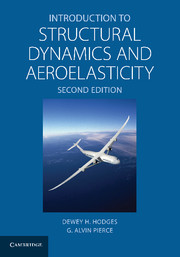Appendix A - Lagrange's Equations
Published online by Cambridge University Press: 05 June 2012
Summary
Introduction
When we wish to use Newton's laws to write the equations of motion of a particle or a system of particles, we must be careful to include all the forces of the system. The Lagrangean form of the equations of motion that we derive herein has the advantage that we can ignore all forces that do no work (e.g., forces at frictionless pins, forces at a point of rolling contact, forces at frictionless guides, and forces in inextensible connections). In the case of conservative systems (i.e., systems for which the total energy remains constant), the Lagrangean method gives us an automatic procedure for obtaining the equations of motion provided only that we can write the kinetic and potential energies of the system.
Degrees of Freedom
Before proceeding to develop the Lagrange equations, we must characterize our dynamical systems in a systematic way. The most important property of this sort for our present purpose is the number of independent coordinates that we must know to completely specify the position or configuration of our system. We say that a system has n degrees of freedom if exactly n coordinates serve to completely define its configuration.
EXAMPLE 1 A free particle in space has three degrees of freedom because we must know three coordinates—x, y, z, for example – to locate it.
- Type
- Chapter
- Information
- Introduction to Structural Dynamics and Aeroelasticity , pp. 231 - 240Publisher: Cambridge University PressPrint publication year: 2011



